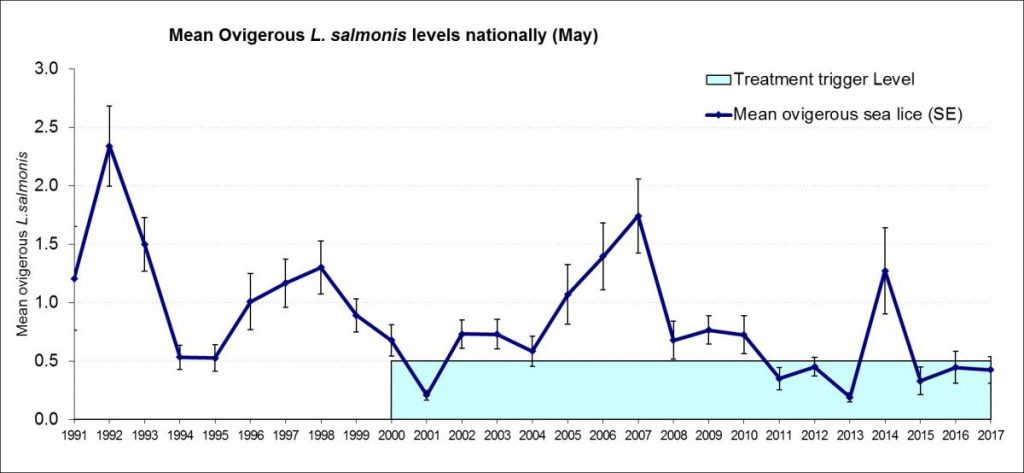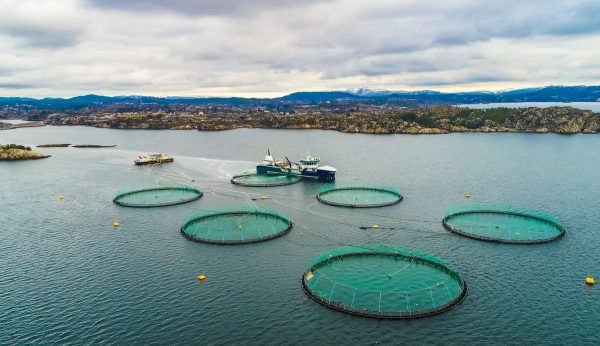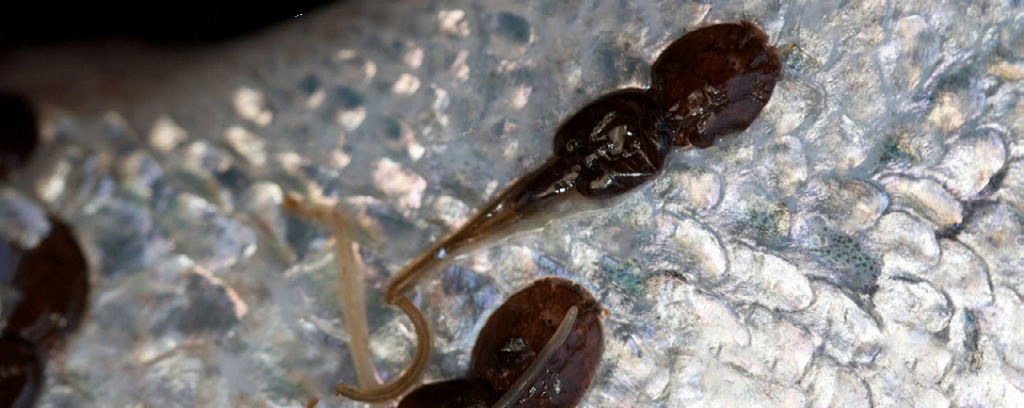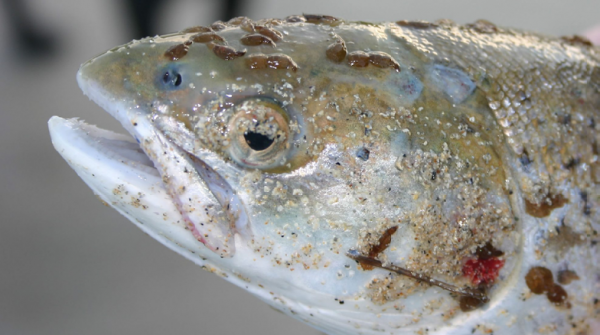Salmon and Sea Trout Data Resource - Aquaculture
Salmon and Sea Trout Data Resource
This Salmon and Sea Trout Data resource is intended for use by anyone interested in the survival of Atlantic salmon and sea trout. The resource will be constantly updated with current salmonid data and scientific papers published. This section deals with salmon aquaculture in Ireland and it's affect on wild salmonid survival.
Benthic Reports 2015-2016
Salmon and Sea Trout Data - Benthic Reports
Benthic reports are furnished to the Department of Agriculture, Fisheries and Marine for salmon farms in Ireland. These reports examine benthic communities and physical conditions in and around salmon farms in Ireland. Unfortunately no effective research in the wider environment is carried out. Effluent, parasites and food waste are distributed widely and research should be carried out to examine effects in wider environment.
Benthic Reports 2015-2016 Salmon Farms Ireland
Hereunder sea lice data reports from the Marine Institute from 1995-2017 inclusive
Salmon Farms by County
Salmon and Sea Trout Data - Licence by County
Here under list of salmon farms and details of licence conditions. It is stated policy that this industry is set for expansion and is being championed as a green responsible industry by the industry and government. It should be noted that these licences do not include any licence condition regarding the use of semi closed or closed containment systems. All these licences are for open net pen technologies which are unsustainable and harmful to both salmonids and the wider environment.
Licences by County
Single Bay Management and Sea Lice Protocol
Salmon and Sea Trout Data - Protocols
The protocols which are in operation to control the salmon farming industry are not based on hard law with little if any enforceable actions at the disposal of the regulatory body. If salmon farms fail to comply with licence conditions regarding sea lice levels or indeed stocking rates there appears to be little if any enforcement options available to the regulatory body and furthermore there appears to be little if any willingness to tackle abuse of the protocols. In recent years many irregularities have been uncovered none more important than the overstocking of a salmon farm in Kerry by more than double the amount of smolts stipulated by the conditions of the licence. The important issue here is that the department appeared not to be legally capable of punishing the owners.
The following protocols are currently in operation in Ireland but Salmon Watch Ireland views with suspicion the governance and implementation of these protocols and really the situation appears to be little more than a set of guidelines which the industry either ignores or implements elements which suit their economic agenda.
Marine Finfish Protocols Ireland
The protocols are interesting and would appear robust but no enforcement actions have taken place except in some very rare cases whereby early harvesting was ordered by DAFM due to sea lice infestation. These actions to harvest fish were taken during a period where an active complaint to the EU by Salmon Watch Ireland was being pursued in regard to the regulation of salmon farming in Ireland. Unfortunately this complaint was not successful. Details of this complaint are included below.
Complaint to EU Commission 2009 by Salmon Watch Ireland
Peer Reviewed Scientific Papers Salmon Aquaculture
Hereunder a selection of papers detailing the various effects of open net salmon aquaculture on wild salmonids and the marine ecosystem. There are also a number of scientific reviews on semi-closed and closed containment salmon aquaculture systems detailing effectiveness against sea lice.
Sea Lice International Review- Effect on Sea Trout
River Erriff Long Term Research Paper Atlantic Salmon
River Erriff Long Term Sea Trout Study
Effect of Sea Lice on Body Condition of Sea Trout
Norwegian Study on effect of SeaLice on Sea Trout
Slice Treatment Salmon Smolt Release Study Western Ireland
M Krkošek analysis on Marine Institute Paper
Marine Institute Papers on Sea Lice Effects
In the interests of transparency the following papers from the Marine Institute are listed below. There are many similarities to the results as outlined in the previous documents but it is essentially the interpretation of the data that Salmon Watch Ireland and indeed the majority of fishery scientists in Ireland and internationally refute the assertion that sea lice have an irregular and insignificant effect on the survival of Atlantic salmon.
Marine Institute Smolt Release Study 2013
Reply by Marine Institute to M Krkošek Paper Above
Marine Institute Study Pearl Mussel- Atlantic salmon survival
The papers from the Marine Institute do not adequately address the issue of sea lice infestation on adjacent farms and certainly do not account for grower fish on-site and seem to ignore environmental conditions which might reduce the production of sea lice including reduced salinity caused by excessive rainfall. This may explain differences in survival of treated and non-treated smolts in years of low lice larval production as treated and non treated will not have different survival rates in certain environmental conditions.
Closed Containment Scientific Reviews and Coastal Ecosystem Damage from Salmon Farming
The following papers are a sample of peer reviewed publications which outline the potential of closed containment and the damage from open net cage farming on the near coastal ecosytem.
Semi-Closed Containment at Sea
The following studies indicate the strategies and technologies which the industry is following in order to restrict the environmental stressors which have resulted in increased parasite density, disease and to combat the effects of warming oceanic conditions. The predominant issue is that the economic cost of treatment and protection of farmed fish has become expensive and with the industry set for expansion a more environmentally and biological strategy is required. The protection of wild fish appears to be a secondary issue.
Closed–containment aquaculture in Atlantic Canada
While all of these technologies are available the industry in Ireland have not engaged in any closed or semi closed technologies.
Ecosystem damage from organic material and chemical usage has been a very contentious issue and by its very nature it is difficult to quantify the damage to the receiving environment. It is evident that open net cage farms do act as a reservoir for disease, parasites and as a source of nutrients far in excess of what could be considered normal in a "functioning wild ecosystem".
While monitoring does take place in the vicinity of the farms it is very difficult to assess the effects and very few studies take place to examine ecological effects in the wider environment. Regarding wild fish it is evident that disease can transfer from farms to a number of species and the effect on crustaceans has been widely reported specifically the use of chemicals for parasite control.
Risk assessment of amoebic gill disease in Norway (Spread of AGD)
Polluting Effects Of Aquaculture Norway
Rural Economy and Connectivity Committee Salmon farming in Scotland
Marine Institute- Aquaculture Monitoring




